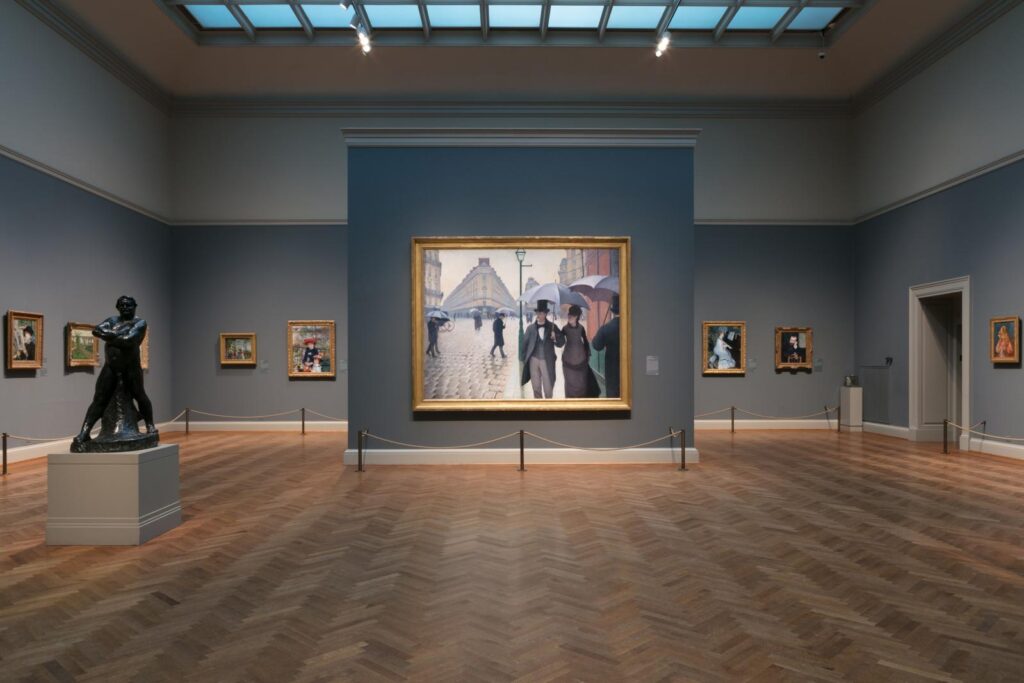A Journey Through The Art Institute of Chicago
Art Institute of Chicago, one of the most esteemed art institutions across the globe, houses a remarkable collection of artifacts spanning over 5,000 years. It represents diverse cultures from around the world.

The Art Institute of Chicago is Created
In 1866, 35 artists came together to establish the Chicago Academy of Design, with the primary objective of operating a free school with its own art gallery. The academy found inspiration in European art academies, such as the Royal Academy. The academy’s charter was granted in March 1867 and classes commenced the following year.
However, the Great Chicago Fire of 1871 destroyed the building, pushing the academy into debt. Despite efforts to continue operating in rented facilities, the academy declared bankruptcy in 1879. Some members of the academy then founded a new organization, the Chicago Academy of Fine Arts. When the Chicago Academy of Design went bankrupt the same year, the new Chicago Academy of Fine Arts bought its assets at auction.

In 1882, the Chicago Academy of Fine Arts was renamed to the Art Institute of Chicago, and elected Charles L. Hutchinson as its first president. Hutchinson, a director of numerous prominent Chicago organizations, including the University of Chicago, played a pivotal role in shaping the direction and evolution of the Art Institute. His tenure saw the Art Institute transform into a world-class museum. Hutchinson served as the president of the Institute until his death in 1924.
The Expansion
During the early 21st century, the Institute embarked on a project known as ‘The Modern Wing’. This addition was located on the southwest corner of Columbus and Monroe. The project, designed by Pritzker Prize-winning architect Renzo Piano, was completed and officially opened to the public on May 16, 2009. This 264,000-square-foot building addition made the Art Institute the second-largest art museum in the United States. The building houses the museum’s world-renowned collections of 20th and 21st-century art, specifically modern European painting and sculpture, contemporary art, architecture, and photography.
Diverse Collection

The Art Institute’s collection encompasses more than 5,000 years of human artistic expression from cultures around the world and contains over 300,000 works of art in 11 curatorial departments. These collections range from early Japanese prints to the art of the Byzantine Empire to contemporary American art.
African Art and Indian Art of the Americas
The Art Institute’s African Art and Indian Art of the Americas collections are on display in two galleries in the south end of the Michigan Avenue building. The African collection includes more than 400 works that span the continent, highlighting ceramics, garments, masks, and jewelry. The Amerindian collection includes Native North American art and Mesoamerican and Andean works.
American Art
The Art Institute’s American Art collection contains some of the best-known works in the American canon. This includes Edward Hopper’s Nighthawks, Grant Wood’s American Gothic, and Mary Cassatt’s The Child’s Bath. The collection ranges from colonial silver to modern and contemporary paintings.
Ancient and Byzantine
The Art Institute’s Ancient and Byzantine collection comprises over 13,000 objects from 4,000 BC to the 7th century AD, from the Mediterranean and the Near East. The collection includes wall paintings, mosaics, sculptures, textiles, and more.
Architecture and Design
This collection at the Art Institute contains more than 250,000 objects that range from architectural fragments and furniture to graphic design and industrial design. It includes works by Frank Lloyd Wright, Ludwig Mies van der Rohe, and Le Corbusier.
Asian Art
The Asian collection of the Art Institute includes over 35,000 objects, including Chinese ceramics and bronzes, Japanese prints and paintings, and Indian and Southeast Asian sculpture.

European Decorative Arts
The European Decorative Arts collection contains over 25,000 objects of furniture, ceramics, metalwork, glass, enamels, and ivory from 1100 to the present.
European Painting and Sculpture
This collection at the Art Institute encompasses over 3,500 works from the 12th through the mid-20th century from across Europe. It includes a strong collection of Italian Renaissance panel paintings.
Modern and Contemporary Art
The Modern and Contemporary Art collection at the Art Institute includes more than 1,000 works of art from 1945 to the present, from around the world.
Photography
The Photography collection at the Art Institute contains over 22,000 works covering the history of photography from its invention in the 1830s to the present.
Noteworthy Exhibitions
The Art Institute regularly hosts special exhibitions to illuminate aspects of its collection and present curatorial and scientific research. Some recent exhibitions include Remedios Varo: Science Fictions, Camille Claudel, and Among Friends and Rivals: Caravaggio in Rome.
Governance
The Art Institute is governed by a board of trustees. The board is responsible for the museum’s long-term financial stability and the fulfillment of its mission to collect, preserve, and interpret works of art of the highest quality. The current president and Eloise W. Martin Director is James Rondeau.
The Art Institute in Popular Culture
The Art Institute has made numerous appearances in films, television shows, and other media. It was famously featured in the 1986 film Ferris Bueller’s Day Off, and has also been seen in The Untouchables, A League of Their Own, and The Dark Knight.
The Art Institute of Chicago, with its diverse collections and commitment to education and research, continues to inspire and educate people of all ages. Whether you’re an art enthusiast, a student, or simply looking for a unique way to spend an afternoon, the Art Institute offers a world-class experience in the heart of Chicago.


